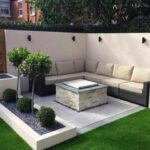When it comes to landscaping, French gardens have long been admired for their elegance and timeless beauty. From the grandeur of Versailles to the charm of Giverny, French garden design has left a lasting impact on the world of horticulture.
The influence of French gardens can be seen in modern landscaping, inspiring homeowners and designers to recreate the classic aesthetic in their own outdoor spaces. In this article, we will explore the essential elements, plant selection, structures and ornaments, color palette and texture, maintenance and care, different styles, and inspirational examples of French garden ideas.
The concept of French gardens has a rich historical significance that dates back to the 17th century. These meticulously planned and carefully manicured landscapes were a symbol of wealth and power for the French nobility.
Today, the principles of symmetry, balance, and formal design that define traditional French gardens continue to captivate garden enthusiasts around the world. Whether you’re looking to transform your backyard into a sophisticated retreat or simply seeking inspiration for your next landscaping project, understanding the elements of a French garden can guide you in achieving a classically beautiful outdoor space.
The influence of French garden design on modern landscaping cannot be overstated. From formal parterres and topiaries to serene water features and formal pathways, elements of French gardens can be adapted to various environments.
By embracing traditional plant selections like lavender, roses, boxwood, and citrus trees or incorporating architectural structures such as pergolas and trellises combined with decorative accents like urns and statues-you can create an enchanting oasis reminiscent of a classic French garden right at home. As we delve into each aspect of French garden design in this article you will discover how these timeless ideas can enhance any outdoor space with grace and sophistication.
Elements of a French Garden
French gardens are known for their elegance, symmetry, and timeless beauty. A key component of French garden design is the meticulous attention to detail, incorporating both natural and architectural elements to create a harmonious and visually appealing outdoor space. In this section, we will delve into the essential components that make up a classic French garden, from the layout and structure to the decorative ornaments that contribute to its distinct aesthetic.
One of the defining features of a French garden is the use of parterres, which are ornamental flower beds with intricate patterns or designs. These can be filled with a variety of plants, such as colorful annuals or neatly trimmed hedges, adding visual interest and texture to the overall landscape.
Additionally, topiaries are another important element in French garden design, where shrubs or trees are shaped into geometric forms or whimsical figures, further enhancing the formal and structured look of the garden.
Water features also play a significant role in French gardens, with fountains, reflecting pools, and ornate water basins adding a sense of tranquility and luxury to the outdoor space. The sound of trickling water and the shimmering reflections contribute to a serene ambiance, creating an oasis for relaxation and contemplation within the confines of the garden.
Finally, formal pathways made of gravel or intricately laid stone tiles provide an organized flow through the garden while also allowing visitors to appreciate its beauty from various vantage points.
To complement these structural elements, symmetry and balance are fundamental principles in French garden design. Every aspect of the layout is carefully planned to create a sense of order and harmony, from the placement of plant beds to the alignment of pathways. This attention to symmetry contributes to the overall grandeur and timelessness that defines classic French gardens.
Plant Selection
When it comes to creating a classic French garden, plant selection is of utmost importance. The choice of plants plays a pivotal role in achieving the timeless elegance and beauty that defines French garden design. Here are some key plants commonly found in French gardens:
- Lavender: With its fragrant blooms and silvery foliage, lavender is a quintessential element of French gardens. It not only adds charm and color but also attracts beneficial pollinators.
- Roses: No French garden is complete without the presence of roses. These flowering beauties come in a variety of colors and can be trained to climb trellises or adorn formal parterres.
- Boxwood: Known for its dense evergreen foliage, boxwood is often used to create defined hedges, borders, and geometric shapes within French garden landscapes.
- Citrus Trees: In warmer climates, citrus trees like lemon or orange add a touch of Mediterranean flair to French gardens with their glossy green leaves and aromatic fruits.
In order to achieve the classic French garden aesthetic, it’s important to carefully consider how these plants are selected and arranged within the landscape. Symmetry and balance are key principles in French garden design, so incorporating these elements into plant placement is essential for creating an authentic look.
Whether you’re aiming for a formal parterre with neatly trimmed boxwood hedges or a relaxed cottage-style garden filled with fragrant roses and lavender borders, thoughtful plant selection will set the tone for your French-inspired outdoor space.
By integrating these essential plants into your garden design, you can capture the essence of French gardens and create a captivating outdoor retreat that exudes timeless charm and sophistication.
Garden Structures and Ornaments
Architectural Elements
French gardens are known for their use of architectural elements to create a sense of grandeur and elegance. Pergolas and trellises are commonly used to define spaces within the garden, providing support for climbing plants and creating beautiful shaded walkways. Fountains are also a key feature in French garden design, adding a sense of tranquility and sophistication to the outdoor space.
Decorative Elements
In addition to architectural elements, French gardens often incorporate decorative ornaments to enhance the beauty of the landscape. Ornate urns, statues, and wrought iron accents are strategically placed throughout the garden to add visual interest and create focal points. These ornamental elements contribute to the overall ambiance of luxury and refinement that is characteristic of French garden style.
Integration With Nature
While architectural and decorative elements play a significant role in French garden design, it is important that they seamlessly integrate with the natural surroundings. The strategic placement of these structures and ornaments should compliment the existing landscape rather than competing with it. This balance between man-made elements and natural beauty is what gives French gardens their timeless appeal.
French garden ideas encompass an array of options when it comes to selecting garden structures and ornaments. Whether you opt for formal or informal interpretations, integrating these features will add a touch of elegance to your outdoor space.
Color Palette and Texture
Color palette and texture play a crucial role in the overall aesthetic of a French garden. These elements are what give this style of garden its distinct charm and elegance. When it comes to French gardens, the color palette tends to be more subdued, with a focus on muted pastels and soft hues. The textures found in these gardens are equally important, as they add depth and visual interest to the space.
When designing a French garden, it’s essential to consider how different colors will work together to create a cohesive and harmonious look. Here are some tips for using color effectively in your French garden:
- Choose a primary color scheme of soft pastels, such as light pinks, pale blues, and muted greens
- Use contrasting colors sparingly to create focal points or highlights within the garden
- Consider the seasonality of your plantings to ensure that your chosen colors will harmonize throughout the year
In addition to color, texture also plays a significant role in creating an inviting French garden. Different leaf shapes, flower types, and hardscape materials can all contribute to the overall texture of the space. Here are some ways you can incorporate texture into your French garden design:
- Include plants with varying leaf shapes and sizes for visual interest
- Incorporate textured hardscape elements such as gravel pathways, stone walls, or brick accents
- Balance different textures throughout the garden for a cohesive look
By paying attention to both color palette and texture in your French garden design, you can create an inviting outdoor space that exudes timeless beauty and elegance. Whether you’re aiming for a formal or informal look, these elements will help you achieve that classic French garden aesthetic.
Creating harmonious color palettes and textures is essential when planning any type of landscape but especially vital when designing gardens inspired by authentic french gardens ideas.
Maintenance and Care
French gardens are known for their elegance, beauty, and meticulous design. However, achieving and maintaining the classic French garden aesthetic requires dedication and attention to detail. To ensure that your French garden remains a stunning showcase of natural and architectural beauty, it is essential to prioritize maintenance and care.
One of the key aspects of maintaining a French garden is regular pruning and grooming. This includes shaping hedges, topiaries, and other plants to maintain their formal and symmetrical appearance. Additionally, proper fertilization, watering, and pest control are crucial to keep the plants healthy and vibrant. The goal is to create a well-manicured landscape that exudes an air of sophistication.
Seasonal upkeep is also important in preserving the timeless allure of French gardens. This involves tasks such as mulching, winter protection for delicate plants, and adjusting irrigation methods based on weather conditions. By staying attuned to the changing needs of the garden throughout the year, you can ensure that it continues to thrive with each passing season.
It’s worth noting that while French gardens require consistent maintenance, the effort is well worth it. The end result is a breathtaking outdoor space that captures the essence of classic French garden design – one that will undoubtedly leave a lasting impression on anyone who beholds its beauty.
| Maintenance Tasks | Importance |
|---|---|
| Regular pruning and grooming | Crucial for maintaining formal appearance |
| Proper fertilization, watering, and pest control | Ensures healthy and vibrant plants |
| Seasonal upkeep (mulching, winter protection) | Helps preserve garden through changing seasons |
French Garden Styles
Formal French Gardens
Formal French gardens are characterized by their symmetrical and balanced layout, geometric patterns, and carefully manicured plants. These traditional gardens often feature parterres with intricate designs, ornate fountains, and neatly trimmed hedges. The use of meticulously arranged planting beds and precise pathways creates a sense of order and elegance. Ornamental elements such as statues, urns, and trellises are strategically placed to enhance the visual impact of the garden.
Informal French Gardens
In contrast to formal French gardens, informal designs offer a more relaxed and naturalistic approach. Informal French gardens may incorporate meandering pathways, cascading water features, and a mix of flowering plants that evoke a wild yet romantic atmosphere. Unlike the strict symmetry of formal gardens, informal French gardens embrace asymmetry and organic shapes to create a sense of harmony with nature. These gardens often feature hidden nooks, cozy seating areas, and charming surprises around each corner.
Contemporary Interpretations
Modern interpretations of French garden design draw inspiration from traditional elements while infusing contemporary flair. Theses style may blend sleek lines with classic features, embrace sustainable practices such as native plantings or incorporate innovative materials for a fresh twist on the timeless aesthetic of French gardens.
Whether in urban courtyards or expansive estates, contemporary French garden ideas offer endless opportunities for creativity, personal expression, and adaptation to diverse settings. Incorporating elements like terraced plantings or minimalist structures provides an exciting evolution of this historic landscaping tradition.
Inspirational French Gardens
In conclusion, French gardens are not only a representation of historical significance but also a timeless inspiration for modern landscaping. The elements of a French garden, such as parterres, topiaries, water features, formal pathways, and the emphasis on symmetry and balance, serve as a guide for creating an elegant and harmonious outdoor space. When it comes to plant selection, incorporating classic plants like lavender, roses, boxwood, and citrus trees is key to achieving the quintessential French garden aesthetic.
Additionally, architectural structures like pergolas, trellises, fountains, as well as decorative elements like urns, statues, and wrought iron accents contribute to the charm of a French garden. The color palette of muted pastels and varied textures add depth and visual interest. Proper maintenance is crucial in preserving the look of a French garden; regular pruning and grooming are necessary to maintain its elegant appearance.
French gardens come in various styles – from formal to informal to contemporary interpretations – showcasing their adaptability to different environments. Finally, drawing inspiration from famous French gardens such as Versailles, Giverny, and Villandry can further spark ideas for creating one’s own unique interpretation of this classic garden style. With these foundational principles in mind along with practical tips for design and maintenance, anyone can bring the romance and elegance of a French garden into their own outdoor space.
Frequently Asked Questions
How Do I Make My Garden Look French?
To make your garden look French, consider using formal geometric designs, such as parterres and hedges, to create a sense of order and symmetry. Adding elements like gravel pathways, topiaries, and planters can also evoke the classic French garden aesthetic.
What Is a Typical French Landscape?
A typical French landscape often features manicured lawns, neatly trimmed hedgerows, and carefully placed ornamental trees and shrubs. The use of symmetrical designs, such as in palace gardens like Versailles, is also a hallmark of the French landscape style.
What Plants Are in a French Garden?
Plants commonly found in French gardens include boxwood for creating hedges and topiaries, lavender for its fragrance and color, roses for their beauty and elegance, as well as fruit trees like apple or pear. Other popular choices are cypress trees, jasmine vines, and various herbs like thyme and rosemary.

Welcome to my gardening blog! I am passionate about plants and enjoy sharing my knowledge and experiences with others. In this blog, I will write about everything related to gardening, from tips on how to get started to updates on my own garden projects.





